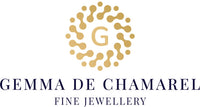Jewellery Care Guide
Jewellery may well be one of your most cherished accessories and there are some simple ways to look after them so that you can keep them looking beautiful and lustrous for many generations.
HOUSEHOLD CHEMICALS
Everyday substances like hairspray, hand lotion, perfume or other cosmetics may contain chemicals that can permanently damage the surface of your pearls and other delicate or porous gems. It is a good idea to remove fine jewellery before swimming in a chlorinated swimming pool or before using household cleaners as the chlorine is harsh on coloured stones and can even damage precious metals.
SUNLIGHT AND HEAT
Sunlight and heat can affect a coloured gem’s durability and colour. It can cause some stones to lose their colour, such as some morganite and topaz. Pearls and other delicate materials, such as ivory, will bleach under extreme exposure to light. Other gems, especially amber, can darken over time when exposed to too much light.
Excessive heat and sudden temperature changes may also fracture some gems. Heat can easily remove the natural moisture these gems need to keep their beauty. Pearls can become desiccated resulting in cracks and discolouration. Opals can discolour and develop tiny cracks, and may lose their all important play-of-colour – the beautiful flashes of different colours seen in beautiful opals.
ULTRASONIC CLEANERS
Ultrasonic cleaners are fantastic at cleaning away all the bits of grime which find themselves embedded in your jewellery. Using one, however, to clean your jewellery should be done with great caution as the vibrations generated by the machine in the cleaning process can sometimes shake the gem out of its setting and can even chip some gemstones.
Ultrasonic cleaners should be avoided for the following items:
- Gemstones which have been treated with a filler, such as some emeralds and rubies.
- Organic gems such as pearls, ivory, coral and amber.
- Gemstones that have been coated with a non-permanent substance like plastic or wax.
- Heat-treated gemstones.
- Some gemstones are very sensitive to heat and temperature changes, such as tanzanite, topaz, zircon, moonstone, kunzite, lapis lazuli, malachite, and opal.
HOW TO CLEAN YOUR JEWELLERY
The best way is actually the easiest and least expensive way.
Coloured gems and diamonds:
Put your jewellery in a small dish with warm water and then use a soft toothbrush, I use a baby toothbrush, to gently clean the stones and the settings. Rinse your jewellery in a glass of water. A lint free cloth can be used to wipe the stones.
Soft, organic gems:
Soft gems, such as pearls, will be scratched using a toothbrush. A new, clean soft makeup brush can be used to gently clean each pearl. If the pearls need a bit more cleaning, use the makeup brush dipped in warm, soapy water. Leave the pearls to air dry on a towel. Pearls worn often should be restrung once a year.
STORING YOUR JEWELLERY
Each fine jewellery piece should ideally be stored in an individual jewellery box. Jewellery boxes that feature individually padded slots for rings and posts for hanging necklaces and bracelets are also ideal. Make sure that the different pieces are kept apart so that they do not rub together, tangle or scratch other stones.
Wearing your jewellery will result in scratches and knocks and they are signs of everyday wear. Whilst the gemstones and settings are durable they are still susceptible to knocks and scratches. We recommend that settings are checked every 6-12 months to avoid any potential loss of gemstones.

